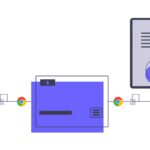HTML is simple yet powerful markup language and even though there are close to 100 different tags, developers end up using only few of them. Having multiple meaningful tags means that developers don’t need to leverage <div> to develop the site structure.
Basic HTML tags such as Header, Navigation, Bold, Footer are common and their functions are quite self-explanatory. But, there are number of HTML tags that web developers should consider using more often to accelerate development. Here are some of them:
1. <time>
Different time values can be used depending on the context and language. Addition of the time values using <time> tag can help the search engines and other automation tools to extract time related information precisely. ‘Datetime’ attribute can be used to add specific time in more apt and machine friendly form.
2. <datalist>
This HTML tag expedites the autocomplete interface for various input elements, each list has various options that are associated with specific value. If <datalist> tag is linked to input elements using list attributes then it can facilitate drop down and many other similar functions.
3. <pre>
<pre> tag is used to define preformatted text which preserves text spaces, tabs and other formatting characters which are not recognized by browsers. It also allows developers to see preformatted text just as it is seen in the source. The text in the <pre> tag is fixed but can be changed using CSS.
4. <code>
In technical writing, <code> is useful to distinguish the code from the sentences in the content. Inclusion of code in this tag facilitates browsers to recognise code and display it more properly.
5. <meter>
<meter> tag is used to express measure on web page which could be any kind of attribute and may include results of particular query or usage of the disk space. This tag has many attributes and most common of them are ‘value’ – which is used to indicate the amount or quota; ‘min’ and ‘max’ are used to indicate the range.
6. <progress>
In any digital communication tool where downloading or task measurement is involved <progress> tool can be used. Developers need to create functionalities to show progress but HTML has default tag to serve this functionality.
7. <output>
This tag is used to show the effect of calculation. The important attribute of this tag is ‘for’ which includes list of elements that are needed for calculation. <output> tag is handy if your web app offers auto pricing, loan and EMI customization, insurance quotes and similar functions.
8. <dfn>
Complex terms and abbreviations need to be defined clearly and <dfn> helps developers to define terms easily. In the most common, the tag contains the term you want to define which is usually wrapped in paragraph or section.
Do you want to learn more about HTML5 or need help with front end development project, reach out to leading front end development company and let us help you in most flexible engagement models.



